Exploring Oceanography: Insights and Discoveries
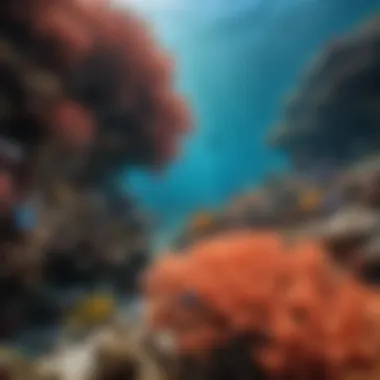
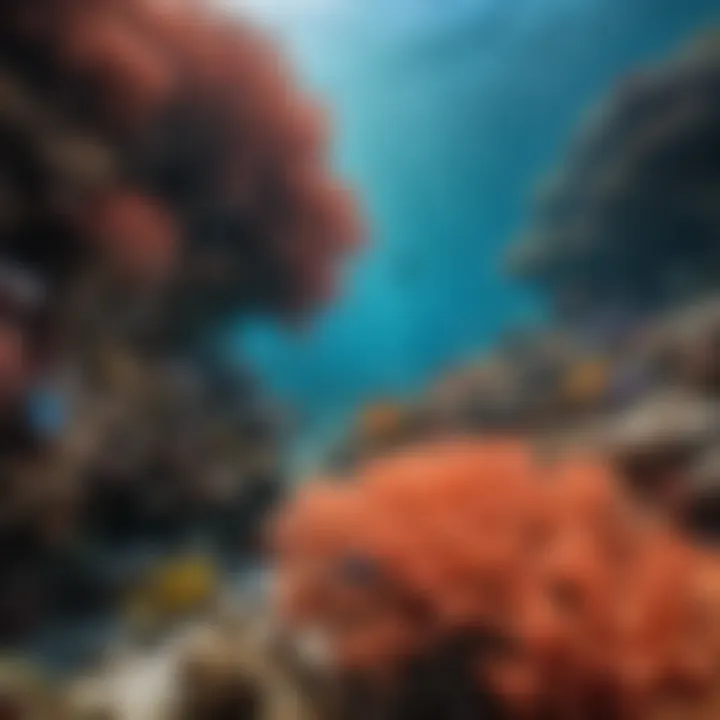
Intro
The ocean, covering over 70% of our planet's surface, is a vast and mysterious entity. From the surface waves dancing in the sunlight to the dark depths that remain unexplored, it's a realm brimming with life and secrets. This article takes you on an engaging journey through oceanography, shedding light on various methodologies and subdivisions essential for understanding the world’s oceans and their profound relevance to contemporary environmental challenges.
Oceanography is not just about observing the waves or studying fish. It involves a careful examination of numerous factors—physical, chemical, biological, and geological—that contribute to the overall functionality of marine systems. It can be seen as a tapestry woven from different threads, each representing a unique field of study, yet together they create a complex picture of life's interactions within our oceans.
As we navigate through the depths of this field, we will explore innovative research methods that keep evolving with technology. We’ll also touch on how oceanography plays a pivotal role in addressing environmental issues, helping us understand climate change impacts, pollution, and marine biodiversity loss.
This voyage into oceanography is designed to be comprehensive, catering to those who are simply curious about the sea, as well as professionals in the field seeking to deepen their knowledge. Let's embark on this exploration together.
Understanding Oceanography
Oceanography is the scientific study of oceans, encompassing various aspects that shape our planet and influence human activities. Understanding this field is paramount, especially as we grapple with environmental challenges, resource management, and climate change. As waves roll across expansive waters, they carry significant information. From physical phenomena like currents to chemical compositions that sustain life, oceanography integrates essential knowledge from multiple disciplines, providing insights that span numerous applications.
Definition of Oceanography
Defining oceanography is quite straightforward yet richly layered. At its core, it involves the observation and exploration of oceans, their ecosystems, and the processes that govern ocean environments. Traditionally, oceanography can be considered a blend of physics, chemistry, biology, and geology, making it a truly interdisciplinary field. Thus, it’s not merely about studying water; it’s about engaging with the dynamic systems and diverse life forms that inhabit oceanic realms. For instance, if one were to consider sound navigation, oceanography would account for how sound travels through water, affecting marine navigation and communication.
Historical Context
Briefly stepping back in time, the history of oceanography is rich and intertwined with human exploration. From ancient mariners navigating rough seas to modern scientists deploying sophisticated underwater sensors, the evolution reflects mankind's quest for knowledge. Notably, the earliest recorded oceanographic maps trace back to the Greek scholars who probed philosophical questions about the seas. Fast forward to the 19th century, significant initiatives such as the HMS Challenger expedition laid foundational insights into the deep-sea ecosystem and set the stage for future research. This longstanding journey reveals that understanding our oceans is deeply embedded in our cultural heritage and scientific advancement.
Importance of Ocean Studies
The importance of ocean studies cannot be overstated. As oceans cover roughly 71% of the Earth’s surface, recognizing their impact on the climate is vital. For instance:
- Climate Regulation: Oceans act as carbon sinks, absorbing substantial amounts of CO2 and thus mitigating global warming.
- Biodiversity: Marine ecosystems are home to a staggering variety of organisms. Monitoring changes helps track shifts in biodiversity, informing conservation efforts.
- Economic Resources: fisheries and offshore energy production rely heavily on ocean health. Ensuring sustainable practices can avert resource depletion.
As we navigate the challenges posed by pollution, overfishing, and climate change, the relevance of comprehensive ocean studies further intensifies. Ignoring the oceans’ plight could spell disaster for ecosystems and human societies alike. Therefore, academic interest shouldn’t solely rest on curiosity; it embodies a necessity for preservation and sustainable management of oceanic resources.
"The sea, once it casts its spell, holds one in its net of wonder forever."
– Jacques Cousteau
In summary, understanding oceanography is more than an academic pursuit; it is an investment in a sustainable future, recognizing that the health of our oceans directly correlates with the well-being of our planet.
Branches of Oceanography
Oceanography is a vast field that encompasses various branches, each contributing a unique aspect to our understanding of the oceans. These branches are essential for unraveling the complexities of marine environments and play a crucial role in addressing many of today’s pressing environmental issues. Understanding these branches allows researchers and enthusiasts alike to better appreciate the intricacies of oceanic systems and their interactions with the planet. Each branch brings its own focus, methods, and findings, creating a tapestry of knowledge that informs policy, conservation, and sustainable practices to protect our oceans.
Physical Oceanography
Ocean Currents
Ocean currents are like rivers within the ocean, constantly flowing and transporting water across vast distances. They play a vital role in climate regulation, influencing weather patterns and the distribution of heat on Earth. One key characteristic of ocean currents is their ability to affect marine ecosystems. For example, warmer currents can lead to increased biological productivity in certain regions, providing rich feeding grounds for various marine life.
The unique feature of ocean currents is their double-edged sword. While they can create flourishing ecosystems, they can also facilitate the spread of invasive species, which is a growing concern. For this article, emphasizing ocean currents offers a glimpse into how interconnected ocean systems can be, aiding in our overall understanding of climate variability and shifts.
Tides and Waves
Tides and waves are another fascinating element within physical oceanography. Tides, influenced predominantly by the gravitational pull of the moon and sun, are fundamental in shaping coastal habitats. They provide a rhythmic ebb and flow that supports diverse biological communities in intertidal zones. Waves, on the other hand, are generated by wind and can change dramatically with weather conditions.
The importance of studying tides and waves lies in their impact on coastal erosion, sediment transport, and the health of coastal ecosystems. The dynamic nature of tides ensures that coastal environments are not static, providing both opportunities and challenges for marine organisms. By focusing on tides and waves, this article underscores the forces that sculpt our coastlines and their significance in oceanography.
Temperature and Salinity
Temperature and salinity are crucial factors that dictate the physical properties of seawater. They influence not only the density of seawater but also the movement of currents. For instance, warm, less salty water tends to rise, while cold, denser water sinks, creating a stratified environment. Understanding these elements helps scientists predict weather patterns and the behavior of marine organisms.
One standout feature related to temperature and salinity is their role in ocean stratification. This layering affects nutrient availability and, consequently, the productivity of the ocean. The balance of temperature and salinity is beneficial for predicting phenomena such as El Niño and La Niña events, which have significant global impacts. Discussing these components in the article highlights their importance in understanding oceanographic processes and their effects on climate.
Chemical Oceanography
Water Composition
The composition of seawater is a finite tapestry of various elements and compounds, predominantly sodium chloride, but also encompassing nutrients, gases, and organic matter. It’s a cornerstone of chemical oceanography because it directly affects biological processes like photosynthesis. Knowledge of water composition is vital for assessing the health and sustainability of marine ecosystems.
An interesting aspect of water composition is its geographical variation. For example, in regions with high run-off, like river mouths, nutrient concentrations can spike, leading to algal blooms. However, these blooms can deplete oxygen and create dead zones, significantly harming marine life. Therefore, studying water composition sheds light on ecological health and informs conservation efforts.
Nutrient Cycling
Nutrient cycling refers to the movement and transformation of essential elements like nitrogen and phosphorus through marine environments. This process is critical for maintaining healthy ecosystems, as it sustains productivity and biodiversity. Disruptions in nutrient cycling can lead to significant ecological consequences.
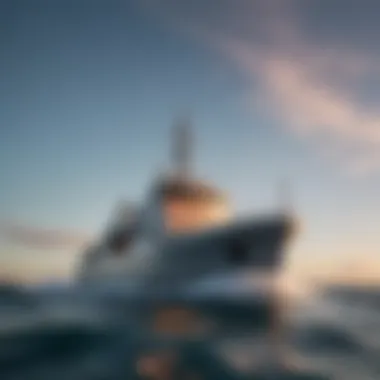
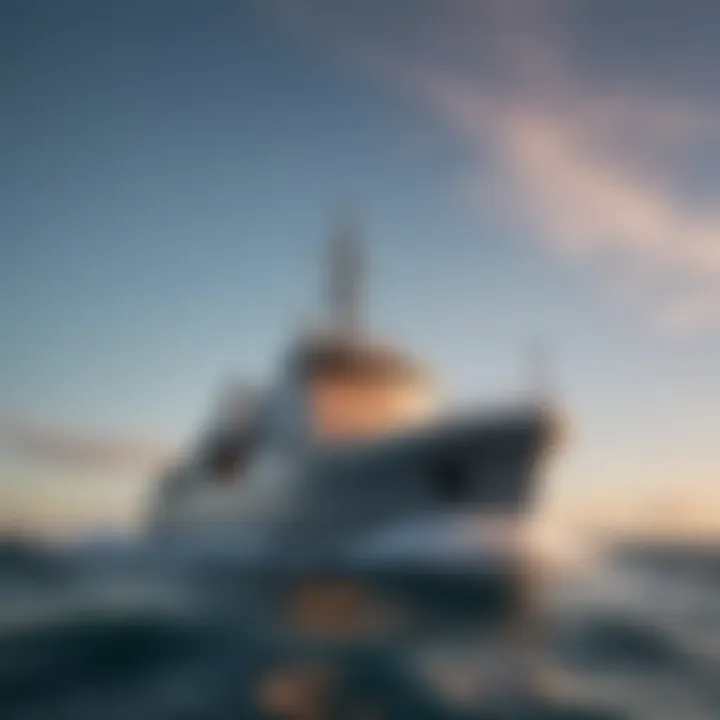
The key characteristic of nutrient cycling is its interconnectedness. For instance, nutrient run-off from land can lead to eutrophication, resulting in substantial declines in water quality. Focusing on this aspect allows the article to address how human activities can negatively impact oceans and highlights the need for sustainable practices to protect marine environments.
Ocean Acidification
Ocean acidification is arising because of the increased absorption of carbon dioxide by the oceans, resulting in lower pH levels. This process poses severe threats to marine life, particularly organisms with calcium carbonate shells, like corals and mollusks. Ocean acidification can disrupt entire ecosystems and is an area of great concern within chemical oceanography.
The unique feature of ocean acidification is its long-term implications for marine biodiversity. By examining this phenomenon, the article can illustrate how climatic shifts are not just immediate concerns but are changing the fundamental nature of marine life. Understanding ocean acidification is imperative for developing strategies to mitigate its impacts, making it a pertinent point of discussion in this narrative.
Biological Oceanography
Marine Ecosystems
Marine ecosystems are incredibly diverse, ranging from coral reefs to deep-sea environments. These ecosystems provide essential services, such as carbon sequestration, nutrient cycling, and habitat for countless species. Biological oceanography focuses on understanding these systems and the interactions within them, making it a linchpin of oceanographic studies.
One standout aspect of marine ecosystems is their resilience. They often exhibit remarkable adaptability to environmental changes, but this is not infinite. Highlighting these ecosystems draws attention to their intricate webs of life and how they function under stress, especially under climate change.
Biodiversity and Conservation
Biodiversity refers to the variety of living organisms in a given area, including their genetic diversity and the ecosystems they inhabit. In the context of oceanography, understanding biodiversity is crucial for effective conservation efforts. The oceans are home to over 230,000 known species, but estimates suggest that millions more remain undiscovered.
The unique feature of biodiversity is its role in ecosystem stability. Diverse ecosystems are often more resilient to changes and stresses. Discussing biodiversity within this article serves to emphasize its importance in maintaining the health of our oceans and the critical need for conservation initiatives in the face of human-induced challenges.
Fisheries and Resources
The study of fisheries and marine resources is central to ensuring sustainable fishing practices. Managed effectively, fish stocks can provide food and employment for millions worldwide. However, overfishing and poor management practices threaten the viability of these resources.
The key characteristic of fisheries is their economic and social importance. They are not only vital for livelihoods but also play a role in the cultural heritage of many communities. By exploring fisheries and resources, the article can underscore the balance needed to manage marine resources sustainably while advocating for practices that ensure future generations can benefit from the bounty of the oceans.
Geological Oceanography
Seafloor Mapping
Seafloor mapping is the process of surveying the ocean floor to understand its topography and geology. This branch is essential for understanding tectonic activity, underwater habitats, and even potential natural resources. Advances in technology have improved our ability to conduct these surveys, leading to more accurate maps and better resource management.
The unique feature of seafloor mapping is its role in uncovering underwater landscapes, such as trenches, mountains, and other geological formations. This knowledge is crucial for various applications, including habitat conservation and disaster preparedness. Including seafloor mapping in this article illustrates the importance of understanding marine geology in relation to broader oceanographic studies.
Plate Tectonics
Plate tectonics plays a critical role in shaping Earth’s surface and driving geological processes beneath the ocean. The movement of tectonic plates can lead to earthquakes, volcanic activity, and the formation of seafloor features. Understanding plate tectonics is essential for mitigating natural disasters and understanding global geological processes.
The key aspect of plate tectonics is how it connects deep-sea processes with surface phenomena. It’s pivotal for not only oceanography but also geological and environmental science. Highlighting plate tectonics brings a broader perspective on how oceanic changes relate to the planet as a whole, thus enriching this article’s narrative.
Sedimentology
Sedimentology studies the processes of sediment transport and deposition in marine environments. This branch sheds light on past environmental conditions and helps predict future changes. Sediments tell stories of historic climate conditions, making them invaluable for understanding current trends.
One unique characteristic of sedimentology is that it serves as a natural record of Earth’s history. By examining sediment layers, scientists can glean insights into how past climates influenced oceanic systems. Discussing sedimentology allows the article to tie together the importance of historical data in informing present and future oceanographic inquiries.
Methodologies in Oceanography
The methodologies applied in oceanography are the backbone supporting the quest for knowledge in this vast and enigmatic field. By employing a variety of methods, oceanographers are able to gather essential information, analyze it, and ultimately draw meaningful conclusions. This plays a crucial role in understanding the complexities of oceanic systems and their interactions with global climates, ecosystems, and human activities. The sophistication of these techniques continues to evolve, presenting both opportunities and challenges.
Field Studies and Surveys
Field studies and surveys are at the heart of oceanographic research. They allow scientists to collect data directly from different marine environments, helping them to observe phenomena in real-time.
Sampling Techniques
Sampling techniques underpin data collection in oceanography. These approaches define how specimens are collected from the ocean—be it water, sediment, or biomaterial. One key characteristic that makes sampling techniques so valuable is their adaptability; they can be modified to suit various study objectives. For instance, surface water samples can reveal information about nutrient levels, while sediment cores can provide insights into historical climatic conditions.
However, each method comes with its own set of challenges. Some techniques may alter the very constructs being analyzed, potentially skewing results. In this sense, while sampling is an indispensable part of oceanographic investigation, oceanographers must remain vigilant and attentive to their methods.
Ocean Buoys
Ocean buoys are vital for long-term monitoring of ocean conditions. They float on the surface and collect a multitude of data parameters, such as temperature, salinity, and wave heights. The defining feature of ocean buoys is their consistent presence in the water; they transmit real-time data back to researchers, effectively creating a floating observatory.
While advantageous for persistent monitoring, the deployment and maintenance of these buoys can be labor-intensive and costly. Additionally, their performance may be influenced by severe weather conditions, which can sometimes lead to data gaps.
Research Vessels
Research vessels are the workhorses of oceanographic studies, offering platforms for comprehensive fieldwork. These ships are equipped with an array of instruments for sampling and experimentation, making them critical for large-scale explorations. The ability to navigate to remote or challenging marine areas allows for data collection across varied ecological regions.


However, the costs associated with operating these vessels can be substantial. They require a well-trained crew and significant logistical support. Furthermore, the environmental footprint of research vessels must be considered, particularly in regions heavily impacted by human activities.
Laboratory Analyses
Laboratory analyses are essential for interpreting the data collected from the ocean. Here, scientists apply rigorous scientific methods to delve deeply into oceanic materials, drawing meaningful insights from their research.
Chemical Testing
Chemical testing involves analyzing the various compounds present in ocean samples. This aspect is crucial for understanding water quality, pollutant levels, and nutrient availability. A key characteristic of chemical testing is its precision; state-of-the-art instruments can detect minute quantities of substances that might be overlooked otherwise. Such accuracy makes it a favored choice among researchers aiming to grasp the intricate balance of marine chemistry.
Nonetheless, the complexity of chemical testing can be a double-edged sword. It often requires a significant investment in both equipment and training, potentially making some procedures less accessible to smaller research initiatives.
Biological Assessments
Biological assessments focus on understanding the complex interactions within marine ecosystems. This involves evaluating species diversity, abundance, and health. A critical aspect of these assessments is their contribution to conservation efforts. By identifying at-risk species and habitats, scientists can inform policy decisions and better manage marine resources.
One unique feature of biological assessments is their ability to reflect the health of entire ecosystems. However, these assessments can also be resource-intensive, needing a substantial amount of fieldwork and expertise to be meaningful and effective.
Geological Studies
Geological studies provide insights into the physical structure of the ocean floor, sediment distribution, and historical geological events. The defining characteristic of geological assessments is their capability to reveal long-term changes in marine environments, which is invaluable for understanding both natural and anthropogenic influences.
While geological studies can yield significant findings, challenges such as the accessibility of certain seabed locations and the need for specialized equipment can limit their scope. Still, the information gained can lead to advancements in our understanding of both ocean formation and current geological processes.
Remote Sensing Technologies
Remote sensing technologies have revolutionized the way oceanography is conducted. They allow scientists to gather data over vast areas and provide invaluable insights without physical intrusion.
Satellite Imagery
Satellite imagery is a powerful tool in oceanography, capturing vast swathes of ocean in real-time. This technology affords researchers critical data on surface temperatures, chlorophyll concentrations, and even algae blooms. One key characteristic that sets satellite imagery apart is its ability to cover expansive regions efficiently.
Despite its advantages, there are limitations; satellite data might not reveal conditions at deeper ocean layers where many significant phenomena occur. That said, it remains a vital component in monitoring changes in oceanic systems.
Aerial Surveys
Aerial surveys utilize aircraft to collect data on marine environments, from mapping reefs to assessing the impact of oil spills. The key characteristic of aerial surveys is their flexibility; they can be tailored to study specific areas or phenomena based on immediate needs. This makes them a beneficial choice, providing unique perspectives that might be overlooked from the surface.
However, logistical challenges such as weather conditions and costs can hinder the execution of these surveys, which may lead to gaps in data.
Underwater Drones
Underwater drones are becoming a game changer in oceanographic methodologies. These remotely operated vehicles can navigate challenging underwater terrains, collecting data that would be difficult to gather otherwise. The defining feature of underwater drones is their capability to operate at great depths, capturing high-resolution images and recording various environmental parameters.
While they offer remarkable advantages, it’s important to recognize potential issues such as battery life and reliability in extreme conditions. Nevertheless, they enable researchers to explore previously inaccessible ocean areas, creating opportunities for significant discoveries.
"Advancements in technology have allowed us to see the unseen in the oceans, bridging gaps that have long hindered oceanographic research."
In essence, the methodologies in oceanography provide the necessary roadmap for exploration and discovery. Understanding these methods is not just important for scientists; it’s crucial for everyone who relies on the oceans—not just for their beauty and resources, but for their role in sustaining life on Earth.
Challenges in Oceanography
Oceanography, while a fascinating field, confronts a multitude of challenges that can hinder progress and understanding. These issues are not mere backdrops but are critical, shaping how we study marine environments and address various ecological crises. By delving into these challenges, we gain insight into not just the oceans but larger global issues that resonate with every person on the planet. Addressing them becomes crucial—not just for scientists, but for policymakers and citizens alike.
Climate Change
Impacts on Marine Life
When talking about climate change, one cannot overlook its profound impact on marine life. As ocean temperatures rise and habitats shift, many species struggle to adapt. Coral reefs, vital to countless marine ecosystems, face bleaching events at alarming rates. Moreover, migratory patterns for species such as fish and whales are being altered, affecting not just individual kinds but entire ecosystems. This disruption can lead to a collapse of biodiversity, a scenario we must strive to avert. It also highlights the interconnectedness of species, making conservation efforts even more pressing.
Sea Level Rise
Sea level rise is another consequence of climate change, triggering a chain reaction impacting coastal communities and marine environments. As ice sheets melt and ocean water expands, low-lying areas face increasing flooding risks. For communities that depend on the ocean for their livelihoods—think fishermen or tourism operators—this can pose serious risks. However, coastal ecosystems like mangroves and wetlands provide natural defenses, underscoring the importance of conservation efforts.
Ocean Temperature Changes
Changes in ocean temperatures alter the delicate balance that supports marine life. Warmer waters can lead to lower levels of oxygen, known as hypoxia, creating 'dead zones' where most life cannot thrive. In addition, various marine species may find their breeding cycles changed, which can have cascading effects up the food chain. Understanding these changes is key to developing strategies for adapting to and mitigating the impacts of climate change on our oceans.
Pollution
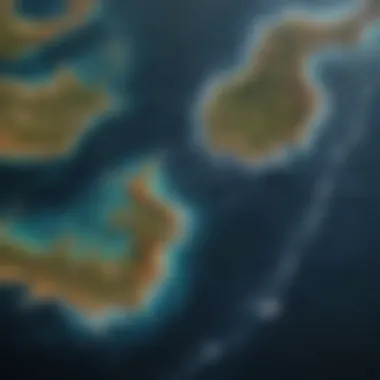
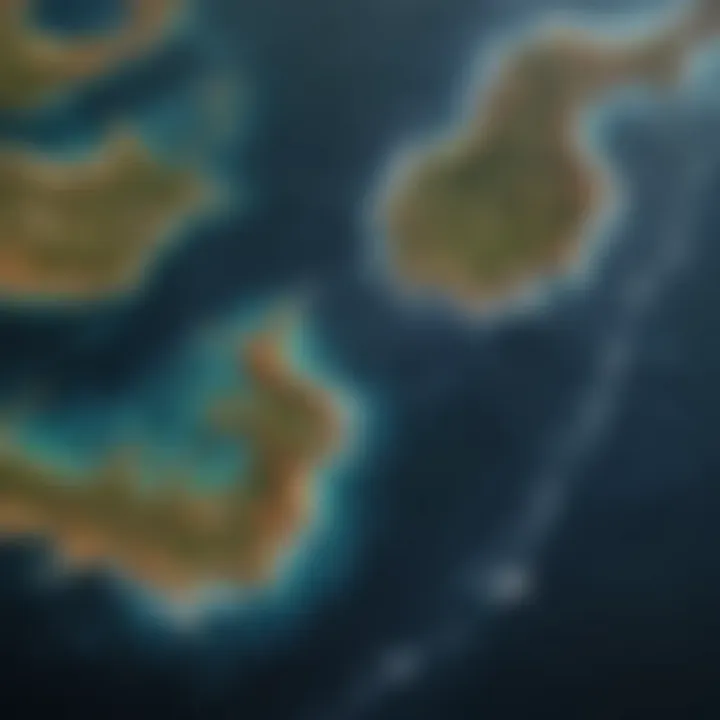
Plastic Waste
The rise of plastic waste in our oceans paints a troubling picture. Millions of tons of plastic enter the sea every year, posing hazards to wildlife and even human health through the food chain. Not only does plastic pollution harm marine animals through ingestion and entanglement, but it also disrupts habitats such as coral reefs. Addressing this issue requires systemic changes in waste management, consumer behavior, and pollution regulations.
Nutrient Runoff
Nutrient runoff from agricultural and urban areas leads to algal blooms. These blooms can create hypoxic or "dead" zones that suffocate marine life. The specific challenge lies in balancing agricultural needs with ocean health. While fertilizers enhance crop yield, their overuse carries consequences that ripple through the ecosystem and ultimately affect food sources for many communities dependent upon the ocean.
Chemical Contamination
Chemical contamination is a serious issue facing our oceans, with pollutants entering through industrial runoff, sewage, and even atmospheric deposits. Harmful chemicals can accumulate in marine life, making their way into human diets and posing health risks. Monitoring these contaminants is essential for public health and marine conservation efforts. This systematic approach helps identify hotspots and form regulations to curtail pollution sources.
Overfishing
Stock Depletion
Overfishing remains a central concern within oceanographic studies. When fish populations are harvested faster than they can reproduce, it leads to stock depletion that threatens not just species but entire ecosystems. This issue goes beyond just marine life; it impacts the communities that depend on fishing for their livelihoods. Adopting sustainable fishing practices is crucial to ensure that future generations can continue to benefit from ocean resources.
Bycatch Issues
A significant side-effect of overfishing is bycatch, where unwanted species are caught unintentionally. These include not only juvenile fish but also marine mammals, turtles, and seabirds. Bycatch poses a daunting ethical dilemma, prompting calls for better fishing techniques and equipment that minimize collateral damage. Innovations in fishing practices can lead to more sustainable methods, benefiting both the environment and fishermen.
Regulatory Challenges
Regulatory challenges encompass a range of issues, from enforcing fishery quotas to combating illegal fishing. Often, existing regulations are not adequately enforced, which undermines conservation efforts. International cooperation plays a significant role here, but it can be complex and politically charged. Raising awareness and educating stakeholders about the importance of sustainable practices could improve regulation compliance.
"Understanding the challenges in oceanography allows us not just to appreciate our oceans, but also to take actionable steps towards their preservation."
In summary, the challenges faced in oceanography—climate change, pollution, and overfishing—are vast and intertwined. Navigating them requires innovation, collaboration, and a commitment to sustainable practices. The journey ahead may be difficult, but with awareness and action, we can create a more sustainable future for our oceans and, by extension, our planet.
The Future of Oceanography
As we stand on the brink of significant environmental changes, understanding the future of oceanography becomes crucial. The oceans are not just vast bodies of water; they are dynamic systems that play a key role in regulating climate, supporting biodiversity, and providing resources for humanity. Thus, looking ahead at the advancements and methodologies that shape oceanographic studies is vital for our survival and understanding of marine ecosystems.
Emerging Technologies
Artificial Intelligence
Artificial Intelligence (AI) is making waves in oceanography by enabling researchers to analyze vast amounts of data swiftly. Unlike human analysts, AI can spot patterns and anomalies across datasets much quicker, enhancing our ability to predict oceanic changes. One exciting characteristic of AI in oceanography is its predictive modeling capabilities. This feature allows scientists to simulate different scenarios based on various environmental variables. While AI brings numerous advantages, it’s not without concerns. There is an ongoing debate about the reliability of AI predictions, particularly when dealing with complex, unpredictable natural systems.
Machine Learning Applications
Machine Learning Applications further bolster oceanographic research by creating algorithms that adapt and improve as they process more data. This adaptability is significant when studying dynamic ocean environments where variables are constantly changing. What makes it appealing is its efficiency in crunching real-time data from sources like underwater buoys and satellite feeds. Yet, similar to AI, machine learning can have drawbacks. The algorithms are only as good as the data provided; poor input can lead to erroneous conclusions, which can be detrimental in critical marine research.
Advanced Robotics
Advanced Robotics bring a new level of exploration to oceanography. Robots can dive into depths that are dangerous or unreachable for humans, offering a firsthand look at untouched marine environments. Their ability to collect samples and gather data without disturbing delicate ecosystems is invaluable. These machines often feature innovative sensors that provide real-time feedback. However, the costs associated with developing and maintaining this technology can be quite steep, which poses a barrier for many research institutions.
Advancements in Research
Interdisciplinary Approaches
Interdisciplinary Approaches unite various fields of study to tackle complex oceanographic questions. By combining insights from biology, chemistry, and physics, scientists can develop a more comprehensive understanding of marine health. This holistic view helps in formulating strategies to address challenges like climate change and pollution effectively. A key benefit of this collaboration lies in the sharing of techniques and resources. However, navigating different disciplinary languages and methodologies can present challenges in establishing cohesive research plans.
Collaborative Studies
Collaborative Studies leverage the power of teamwork among institutions around the globe. Sharing resources, data, and expertise fosters innovation and leads to more robust scientific outputs. A notable advantage is the diverse perspectives that researchers bring to the table, enhancing creativity and depth in solving problems. On the flip side, coordinating large-scale collaborations can sometimes lead to bureaucratic delays that hinder timely discoveries.
Open Data Initiatives
Open Data Initiatives aim to democratize oceanographic information, making it accessible to researchers, policymakers, and the general public. This openness encourages transparency and enables rapid advancements as scientists can build on each other’s work. A significant unique feature is the speed at which knowledge can circulate within the global scientific community. However, ensuring data quality and consistency is crucial to prevent misinformation, which is a challenge that requires attention.
Educational Opportunities
Academic Programs
Academic Programs are essential to cultivating the next generation of oceanographers. These structured courses equip students with the necessary skills and knowledge. A critical aspect of these programs is their balance between theoretical knowledge and practical applications. However, not all programs maintain the same level of rigor, so prospective students must research carefully to find one that suits their aspirations.
Online Courses
Online Courses bring flexibility and accessibility to learning about oceanography. They enable anyone with an internet connection to study diverse topics at their pace, making education more inclusive. The range of material available means learners can deepen their knowledge in niche areas of interest. Nevertheless, the lack of face-to-face interaction might limit hands-on experience and mentorship opportunities.
Field Experience
Field Experience provides invaluable insights into real-world applications of oceanographic research. Discoveries made hands-on often stick with individuals much longer than facts learned in a classroom. Programs that incorporate field experience prepare students to face real challenges, equipping them with practical skills that are highly sought after in the workforce. However, these opportunities often require significant financial investment and physical presence, which might be constraints for some students.
As we look toward the future, the integration of innovative technologies, collaborative research, and robust educational systems will shape how we understand and protect our oceans. It's a journey that demands attention and effort, ensuring future generations inherit healthy, thriving marine ecosystems.







